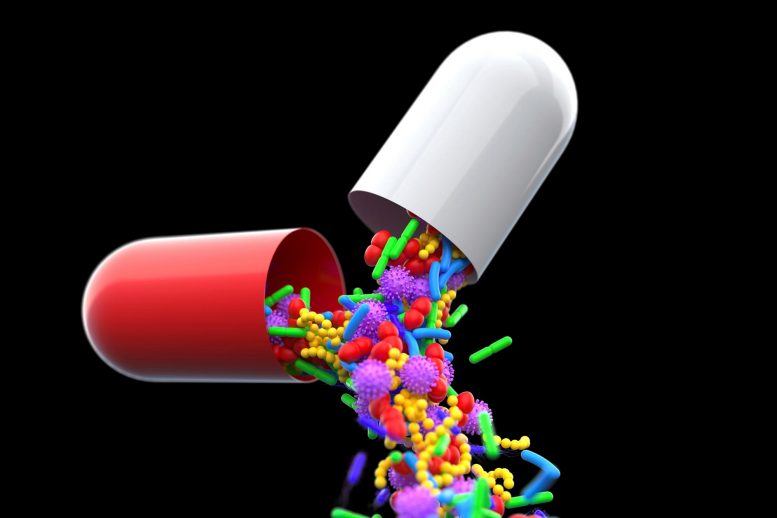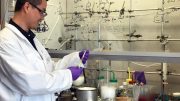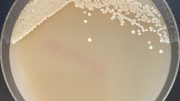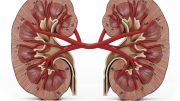
Researchers have developed a safer method to manipulate highly reactive carbene molecules, according to a study published in Science. The team created catalysts using affordable, Earth-abundant metals such as iron, copper, and cobalt. This new method can be used to produce valuable molecules faster and at a larger scale than conventional approaches, similar to the step-change seen when engineers began using steel instead of brick and mortar for skyscraper construction.
Researchers are harnessing the power of carbenes to improve drug manufacturing.
A team at The Ohio State University has developed a safer and more efficient method to manipulate reactive carbene molecules, potentially expediting the production of medicines and agrochemicals. This method could significantly improve the manufacture of cyclopropane, a crucial component in some drugs, including the COVID-19 treatment Paxlovid.
Carbenes are among the most adaptable building blocks in organic chemistry, but they may also be dangerously hot. Due to their explosivity in the lab, scientists often avoid using these very reactive molecules.
However, in a new study that was just published in the journal Science, researchers from The Ohio State University describe a new, safer method to turn these short-lived, high-energy molecules into much more stable ones.
“Carbenes have an incredible amount of energy in them,” said David Nagib, co-author of the study and a professor of chemistry and biochemistry at Ohio State. “The value of that is they can do chemistry that you just cannot do any other way.”
Members of the Nagib Lab, in fact, specialize in harnessing reagents with such great chemical energy and have contributed to the development of a plethora of new substances and processes that would otherwise be chemically unattainable.
In this research, the researchers created catalysts out of inexpensive, Earth-abundant metals such as iron, copper, and cobalt and combined them to facilitate their new method of harnessing carbene.
They were successful in channeling the power of reactive carbenes to fabricate valuable molecules on a much larger scale and much faster than standard approaches. Nagib likened this development to the moment when engineers discovered how to employ steel rather than brick and mortar to construct skyscrapers.
For instance, one molecular feature that chemists have been hard-pressed to create is cyclopropane, a small, strained ring of twisted chemical bonds found in some medicines. More recently, cyclopropane has been used as a key ingredient in the oral antiviral pill called Paxlovid. Used to treat COVID-19, the pill reduces the severity of the disease by stopping the virus from replicating, rather than killing it outright.
Although the cyclopropane needed to fabricate the drug has been difficult to create in large quantities, Nagib said he believes his lab’s new method could be applied to create the drug more quickly and at a larger scale. “Our new method will enable better access to dozens of types of cyclopropanes for incorporation into all kinds of medicines to treat disease,” he said.
While the team’s research does have potential applications outside the pharmaceutical realm, like agrochemicals, Nagib said he’s most passionate about how their tool could speed up the discovery of new, targeted medicines. “You could technically apply our methods to anything,” he said. “But in our lab, we’re more interested in accessing new types of more potent drugs.”
Nagib predicts that using the process his team developed, a chemical reagent that currently takes 10 or 12 steps to make (by explosive intermediates) could be done in four or five, knocking off nearly 75% of the time it takes to fabricate.
Overall, Nagib said he hopes this research will help other chemists do their work.
“There are lots of really great scientists around the world who do this kind of chemistry and using our tool they could potentially have a safer lab,” Nagib said. “The flavor of science that we do, the most satisfying reward is when other people use our chemical methods to make important molecules better.”
Reference: “Carbene reactivity from alkyl and aryl aldehydes” by Lumin Zhang, Bethany M. DeMuynck, Alyson N. Paneque, Joy E. Rutherford and David A. Nagib, 4 August 2022, Science.
DOI: 10.1126/science.abo6443
The study was funded by the National Institutes of Health, the National Science Foundation, and the Sloan Foundation.









L (Yod) descended endlessly, unlimitedly and infinitely into pure nothingness beyond any retrieval. Telltaling undeniable evident signs can be spotted within everything, all that there is and there isn’t. My mark is engraved deeply within them all, patent to the eyes tending to admit the truth and are not in the state of denial.
Blessings,